+255-787-191-211 / +31 (0) 577 49 2403
[email protected] / [email protected]
The highest free-standing mountain in the world, Mount Kilimanjaro, has drawn thrill-seekers for more than a century. Alpine meadows emerge from glacier-covered peaks, which contrast with the massive bulk of lush rainforests and deeper gorges that blanket this volcano’s slopes. The experience of climbing Mount Kilimanjaro is priceless. The experience peaks when the morning sun gleams off the snow-covered glaciers at the summit of the highest point of the African continent as trekkers take in the wonders of African nature across several climatic zones.
It takes five to nine days to climb Mount Kilimanjaro to the summit, after which you must descend to the base camp. Because you will become more accustomed to the altitude, the longer you spend on the mountain, the greater your chance of successfully reaching the peak.
The top of Mount Kilimanjaro, Uhuru Peak, can be reached through seven primary routes, one of which begins on the mountain’s northern side and the others on its southern. Marangu, Machame, Lemosho, Shira, Rongai, Northern Circuit, and Umbwe are the routes.
For the majority of trekkers, reaching the peak is a significant life goal. Many of them gave their decision to climb Mount Kilimanjaro a lot of contemplation. After all, it’s a long journey to an isolated African nation. Mt. Kilimanjaro expeditions are also more expensive when compared to other hiking excursions across the world. All of these factors taken together necessitate cautious trip planning.
Here are the seven ascent routes to Kilimanjaro. Everyone has advantages and disadvantages, such as how varied the scenery is or how effectively it allows you to acclimate. To assist you in selecting the best option for you, we’ve covered them all in this article.
There are positive and negative aspects to each of the seven Kilimanjaro routes, including price, the variety of the scenery, and summit success rates.
Of all the trekking routes up Mount Kilimanjaro, the Lemosho Route is frequently regarded as the most picturesque. It is a lovely, flat hike that traverses the entire Shira Plateau from west to east. Up until the route’s intersection with the Machame route near Lava Tower, there are few people on the road.
Hikers may have the opportunity to see wildlife as they travel along the trail through a lovely rain forest. In addition to blue monkeys, small lizards, and a variety of birds, black and white colobus monkeys are frequently spotted in the woodlands.
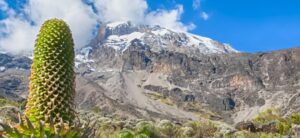
Potential climbers have the misconception that the Marangu Route is a simple path to the top because it has been called the “Coca Cola” route. To be completely honest, this is not the case! It is not necessarily easier than any other route just because it takes at least 5 days to finish. Only because it is the only way up Kilimanjaro where you sleep in huts rather than tents do people claim it to be easier.
For those with no prior experience of high-altitude trekking, an optional acclimatization day at Horombo Huts is strongly advised.
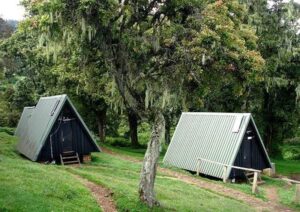
Given its reputation for being a challenging ascent, the Machame route—also known as the Whiskey route—is distinguished from the simpler Marangu path, which is known as the Coca-Cola way. The climbers on Machame trek steeper paths, for longer lengths, and sleep in tents, in contrast to the Marangu Route’s gentle ascent and hut accommodations.
Despite being a relatively challenging trail, the Machame route on Kilimanjaro is highly possible, even for first-time backpackers with little to no altitude expertise. Thanks to its favorable acclimatization profile, this route is advised for individuals looking for a shorter trip.
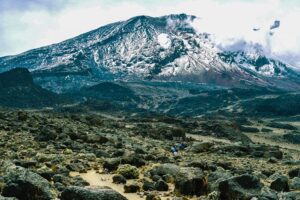
A rarely used trail called the Shira Route starts off close to Shira Ridge. It resembles the Lemosho route quite closely. In actuality, Lemosho is an upgraded version of Shira, which was the initial path. Shira is a scenic and varied route, but because it begins at a relatively high altitude and is easily reached by car, it is less desirable than its successor. On the first day of camping at 11,800 feet, climbers may experience some altitude-related problems.
The journey begins with a lengthy drive from Moshi to Shira Ridge as it makes its way toward Mount Kilimanjaro from the west.
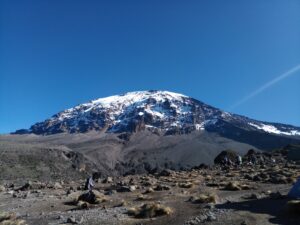
Only the Rongai route accesses the top from the mountain’s northern flank, close to the Kenyan border. It’s one of the seven Kilimanjaro routes that is least busy.
The seven-day plan is advised (as opposed to the six-day itinerary), as there aren’t many opportunities to “climb high, sleep low” on this trail due to its topography.
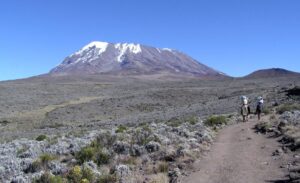
With an approach much to the west of the mountain, the ascent starts at Londorossi Gate, at a height of 2360 meters. Following the Lemosho trail, it traverses a magnificent jungle where some of the area’s most unusual wildlife can frequently be spotted. The path continues upward to Shira Ridge, the third top of the mountain. Before going north onto the actual Northern Circuit from there, you will first cross the renowned Shira plateau and view the magnificent Shira Cathedral.
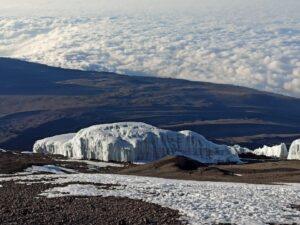
The Umbwe path is the most difficult and difficult route on Mount Kilimanjaro, and it is one of the fastest approaches to the Southern Glaciers and the Western Breach.
The Umbwe Route is the route to choose if you want to go hiking with a real climbing challenge. It is a secluded, rarely traveled trail that can be incredibly challenging but also highly rewarding. If you want to challenge yourself on Mount Kilimanjaro’s slopes away from the throngs that can be found on the more popular trails, this is the route to take.
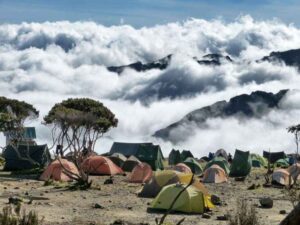
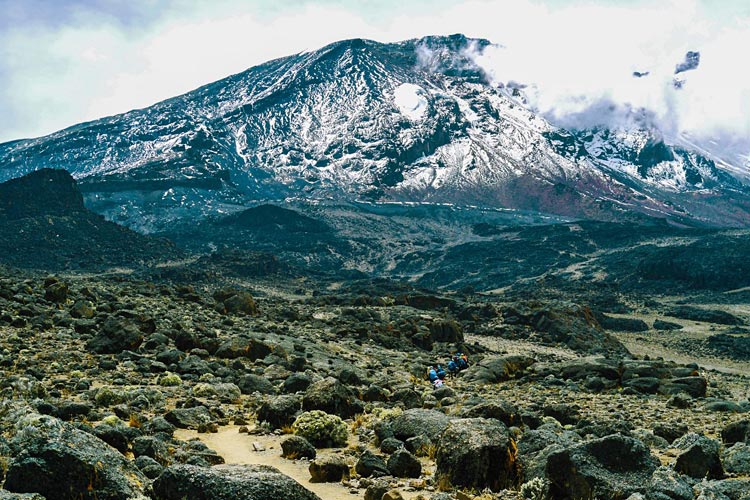
Make Your Adventure Life Alive
If you want to succeed, you need to do this. If you want to climb Kilimanjaro, you will have to walk a lot on everything, so get used to walking a lot.
Many individuals who are getting ready to climb Kilimanjaro forget that it takes 5 to 8 hours every day to trek from one station to the next. You will be trekking for 5 to 7 hours per day because it generally takes 6 or 8 days to reach the top. Be sure to get ready for this.
You don’t like to drink water, right? Start getting drunk now! If you want to go far, you must eat a snack. Because you are higher up, you are more likely to become dehydrated, which can make you feel lightheaded or give you a bad headache.
5 liters of water per day is advised by those who have successfully reached a peak and reduced safety. Even if it may appear like a difficult undertaking, perseverance is required if you want to succeed.
It is normal to be excited to reach Africa’s highest peak, but you must be on guard and keep in mind that there is no use in hurrying.
Accelerating it can worsen your situation. People may choose to use the quickest way if they want to climb a mountain in 4 or 5 days. Because of this, a lot of people end up becoming sick while climbing the mountain and give up. Instead, browse all the channels and read reviews about them from other viewers.
When it comes to Kilimanjaro, this is undoubtedly one of the most frequently asked questions.
Although climbing Kilimanjaro is challenging, you don’t need to be an experienced mountaineer or athlete to succeed. Additionally, there are additional factors like the cold that make it difficult.
You need to be somewhat fit to climb Kilimanjaro without feeling like the world is ending. You must be able to go on daily hikes for a number of hours. manageable even though the most of the walk is uphill.
You will often hike for four to six hours per day. On the other hand, the summit day, which starts at midnight, will require a 12- to 16-hour climb! This is due to the long descent required to get to your tent for the night after hiking for about six or seven hours to the peak of Kilimanjaro, Uhuru Peak.
Recall your geography classes from high school? There is less oxygen in the atmosphere the higher you go.
When you are forced to ascend too quickly and to a high altitude, your body experiences acute mountain sickness (AMS). Or, to put it another way, your body panics because it isn’t getting enough oxygen.
The mildest form of AMS is altitude sickness, which is more annoying than problematic. Over 75% of climbers who attempt Mount Kilimanjaro have symptoms of altitude sickness after they reach an altitude of more than 3,000 meters.
You should therefore prepare for some degree of altitude sickness, and if you manage to avoid it: congrats!
Be aware that hydration can assist to decrease altitude sickness symptoms. Chug on then!
Additionally, even if altitude sickness has caused you to lose your appetite, make sure to consume full meals while on the mountain. On an empty stomach, you can’t handle the climb’s challenges!
Of sure, climbing Kilimanjaro is riskier than sitting at home. There is risk involved with any adventure.
A safer climb results from proper training.
Your climb will be more secure the more time and effort you invest in your physical Kilimanjaro preparation. For instance, you’re less likely to roll a foot if you’ve worked to strengthen your ankles.
An effective preparation makes climbing safer.
Your practical planning, which includes activities like the following, is much more crucial to the security of your climb.
The cost of climbing Kilimanjaro is high. The primary expenses are your international flights, the tour operator charge, and the gratuity for the mountain crew (more on that in the next item).
Additionally, the price of a Kilimanjaro climb can differ significantly from person to person depending on factors including your starting point, the length of your climb, and the operator you select.